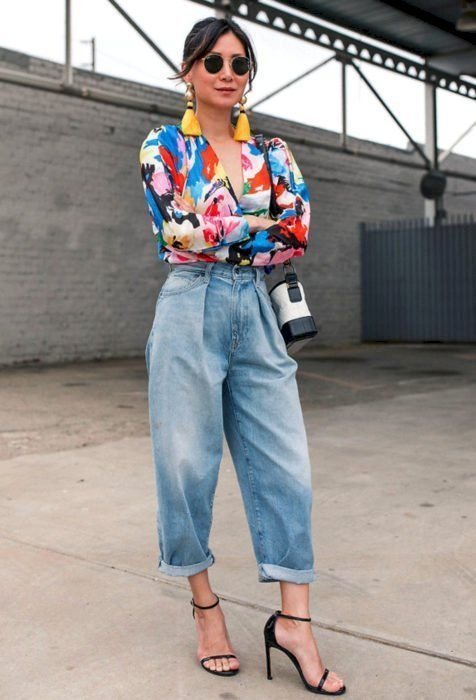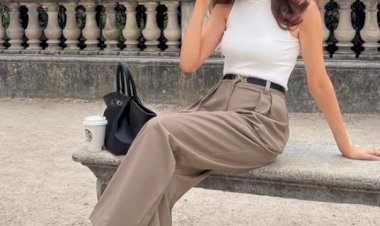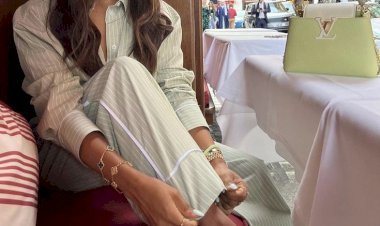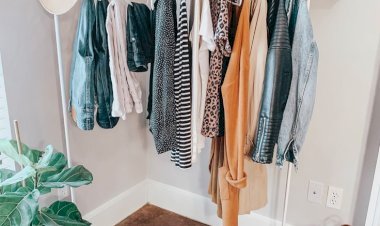How to Define and Refine Your Personal Style: A Complete Guide
Discover how to define and refine your personal style with easy tips, U.S. trends, wardrobe ideas, and a 30-day style challenge.

Your personal style is more than just the clothes you wear—it’s how you express who you are to the world. Whether you’re dressing for work, a night out, or a lazy Sunday, knowing your style helps you feel confident and put together without stress. Many people struggle because they don’t know where to start or how to keep their look consistent over time. The good news? You can learn how to define and refine your personal style step by step. ➤ In this article, we are going to...
1. Understanding What Personal Style Really Means
Personal style is the unique way you combine clothing, accessories, colors, and even hairstyles to create a look that reflects your personality. It’s not about following every fashion trend—it’s about knowing what works for you and wearing it with confidence. The best styles feel effortless because they match both your lifestyle and your comfort level. For example, if you’re always on the go, your style might lean toward practical yet stylish pieces. On the other hand, if you work in a creative field, you might experiment with bold colors and unique shapes. The first step in learning how to define and refine your personal style is understanding that it’s a reflection of you, not a set of rules from a fashion magazine.
2. Why Defining Your Style is Worth the Effort
When you know your style, shopping becomes faster, outfits become easier to put together, and you waste less money on items you never wear. You also save time each morning because you know exactly what fits your look. Beyond convenience, having a clear style can boost your confidence—when you feel good in your clothes, it shows. This is why so many people search for how to define and refine your personal style. It’s not just about looking better; it’s about feeling more like yourself.
3. Finding Inspiration Without Copying Others
One of the easiest ways to start is by finding style inspiration from magazines, Pinterest, Instagram, or celebrities. But the key is not to copy someone’s look exactly. Instead, notice patterns in what you like—colors, shapes, fabrics, and overall vibe. Do you like clean, minimalist lines or bohemian layers? Are you drawn to earthy tones or bold brights? Once you recognize these patterns, you can build your style around them. Remember, learning how to define and refine your personal style means adapting ideas to fit you, not forcing yourself into someone else’s wardrobe.
4. Assessing What’s Already in Your Closet
Before buying anything new, look at what you already own. Pull out your favorite outfits and figure out why you like them. Is it the fit, the fabric, the color, or the way they make you feel? Then look at the pieces you never wear and ask yourself why. This process will help you identify what truly works for you. Keep what fits your style goals and donate or sell the rest. This is one of the simplest but most powerful steps in how to define and refine your personal style.
5. Identifying Your Color Palette
Colors play a huge role in how your outfits look and how you feel wearing them. Some people look best in warm tones like mustard yellow and coral, while others shine in cool tones like navy blue and emerald green. You can figure this out by looking at which colors make your skin, eyes, and hair pop—or by taking an online seasonal color analysis. Once you have a palette, it becomes much easier to mix and match your wardrobe.
6. Understanding the Role of Fit and Proportion
No matter how beautiful a piece is, it won’t look right if it doesn’t fit your body shape. Understanding proportion is essential. For example, if you’re wearing wide-leg pants, balance them with a fitted top. If you wear oversized tops, pair them with slim-fit bottoms. The right proportions make your outfits feel polished and intentional, even if they’re casual. Fit is one of the most important parts of how to define and refine your personal style because it ensures you look your best in any situation.
7. Building a Core Wardrobe
A core wardrobe is made of versatile, high-quality basics you can wear in multiple ways. For many Americans, this might include a great pair of jeans, a white button-down shirt, neutral blazers, black trousers, and a comfortable pair of sneakers. These basics are your foundation, and you can add trendier pieces to keep things fresh. When you invest in your core wardrobe, you spend less over time because you’re buying pieces that last and work with almost everything.
Example Spring 2025 U.S. Capsule Wardrobe
- 2 pairs of jeans (light and dark wash)
- 1 black blazer
- 3 plain tees (white, black, gray)
- 1 trench coat
- 1 pair white sneakers
- 1 pair black ankle boots
8. Adding Statement Pieces
Once your basics are set, it’s time to add personality with statement pieces. These might be bold jackets, patterned skirts, colorful scarves, or unique shoes. Statement pieces are what make your style memorable. They don’t have to be expensive—thrift stores, vintage shops, and seasonal sales are great places to find them. The key is to choose items that still fit your overall style so they don’t feel out of place.
9. Knowing When to Update Your Style
Your style isn’t frozen in time. As your life changes—new job, moving to a new city, lifestyle shifts—your style might change too. The secret to how to define and refine your personal style is being open to small updates that keep your look fresh without losing the core of what makes it “you.” For example, you might swap certain colors for others, or trade heels for more comfortable shoes if your daily routine changes.
10. Avoiding Common Style Mistakes
Some of the biggest mistakes people make include chasing every trend, ignoring fit, and holding onto clothes that don’t work. Another is buying items that don’t match anything else in your closet. To avoid these, stick to your defined color palette, know your best silhouettes, and shop with a plan. This not only keeps your style consistent but also saves you money.
11. Using Accessories to Elevate Your Look
Accessories like belts, hats, bags, and jewelry can completely change the vibe of an outfit. A simple jeans-and-T-shirt combo can look chic with the right bag and earrings. Accessories are also a low-cost way to experiment with trends without committing to a full outfit. When learning how to define and refine your personal style, mastering accessories is a game-changer.
12. Seasonal Style Adjustments
In the U.S., seasonal changes can mean big shifts in your wardrobe. Winter might require layering and heavier fabrics, while summer calls for breathable materials and lighter colors. Keeping seasonal pieces organized helps you see what you have and avoid buying duplicates. Rotating your wardrobe also keeps it feeling new.
U.S. Seasonal Trends for 2025
- Spring: Soft neutrals, oversized blazers, floral midi skirts
- Summer: Linen sets, coastal cowgirl accessories, bold sunglasses
- Fall: Earthy tones, knit vests, chunky loafers
- Winter: Oversized coats, monochrome layering, faux-fur accents
13. Shopping Smart and Sustainable
Fast fashion can be tempting, but building a thoughtful wardrobe is better for your wallet and the planet. Invest in quality over quantity and consider secondhand options. Many U.S. shoppers now use apps like Poshmark, Depop, or ThredUp to find high-quality items at lower prices. Shopping with sustainability in mind can also help define your style as someone who values conscious choices. Ethical brands like Everlane, Pact, and Reformation are leading the charge in the U.S. for 2025.
14. Tracking What You Wear
One simple way to refine your style is to track your outfits for a month. You might use your phone camera or an app. This helps you see which pieces you wear the most and which ones you ignore. You’ll quickly notice patterns in colors, shapes, and styles you prefer, making it easier to shop with intention.
15. Budgeting for Style
You don’t need a huge budget to have great style—you just need to plan your spending. Decide how much you can invest in your wardrobe each month or season. Spend more on staples you’ll wear often and less on trendy items.
Average Monthly Clothing Budget in the U.S. (2025)
|
Income Level |
Average Clothing Spend per Month |
|
Under $40K |
$80–$100 |
|
$40K–$75K |
$120–$180 |
|
$75K+ |
$200–$350 |
Source: U.S. Bureau of Labor Statistics, 2024–2025 Estimates
Average Monthly Spend by Age Group:
|
Age Group |
Average Monthly Clothing Spend |
|
18–24 |
$110 |
|
25–34 |
$160 |
|
35–44 |
$190 |
|
45–54 |
$170 |
|
55+ |
$120 |
16. Confidence: The Final Step in Style
Even the best outfit won’t shine if you don’t feel good in it. Confidence is the most important accessory you can wear. Stand tall, smile, and own your look. When you’re confident, your personal style naturally stands out—no matter how simple or bold it is.
17. Celebrity Style Inspirations
Sometimes, looking at public figures with distinct style can help you better understand your own preferences.
|
Style Type |
Example Celebrities |
Key Features |
|
Minimalist Chic |
Meghan Markle, Zendaya |
Neutral tones, clean lines, fitted basics |
|
Bohemian |
Vanessa Hudgens |
Flowy dresses, earthy colors, layered jewelry |
|
Streetwear |
Hailey Bieber, ASAP Rocky |
Oversized jackets, sneakers, bold prints |
18. The 30-Day Style Challenge
If you want to speed up your style journey, try this simple one-month plan:
- Week 1: Audit your closet and remove unworn items.
- Week 2: Identify your color palette and stick to it when dressing.
- Week 3: Create 5 go-to outfits from what you own.
- Week 4: Add 1–2 statement pieces to freshen your look.
Conclusion
Finding your unique look is a process, but it’s one worth taking. When you know how to define and refine your personal style, you save time, spend smarter, and feel better every day. Your style should be a reflection of you—comfortable, practical, and a little bit exciting. Start small, experiment, and remember: the best style is the one that makes you feel like yourself.
FAQs
1. How do I start if I have no idea what my style is?
Begin by looking at what you already own and figuring out what you like most. Then explore magazines or Pinterest for inspiration.
2. Do I have to follow trends to have good style?
Not at all. Many people who master how to define and refine your personal style focus on timeless pieces instead of trends.
3. How much should I spend on clothes each month?
It depends on your budget. Many U.S. shoppers spend between $80 and $200 monthly, depending on income.
4. Can my style change over time?
Yes, and it should. Life changes often bring style changes—just make sure they still feel authentic to you.
5. What’s the easiest way to refine my style without spending much?
Try new combinations with what you already own, add inexpensive accessories, and focus on better fit.

 Selina Smith
Selina Smith 















